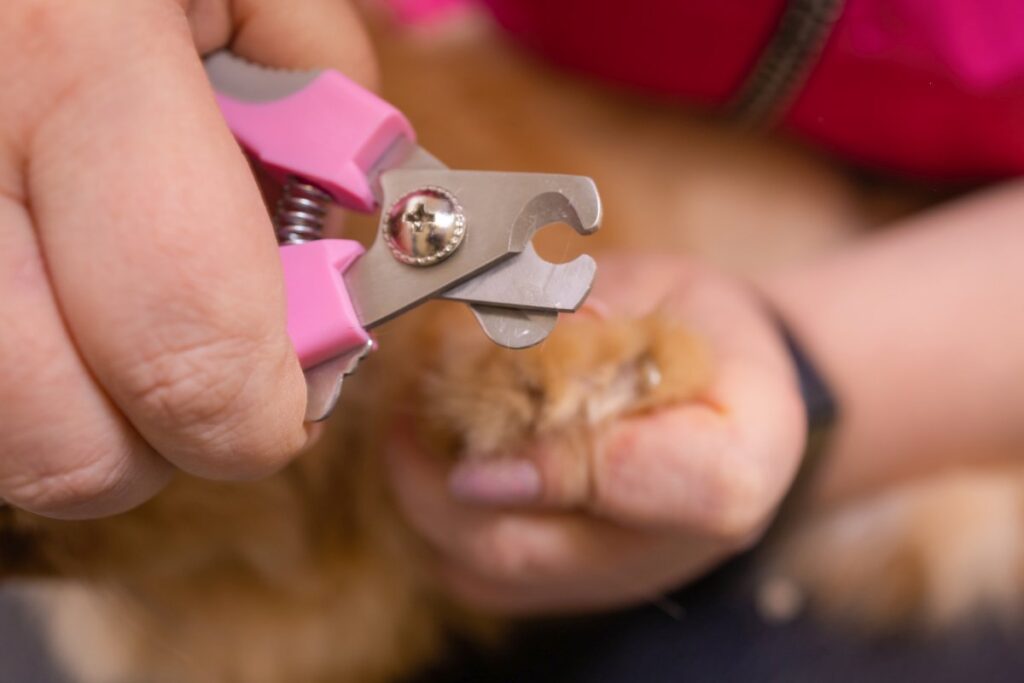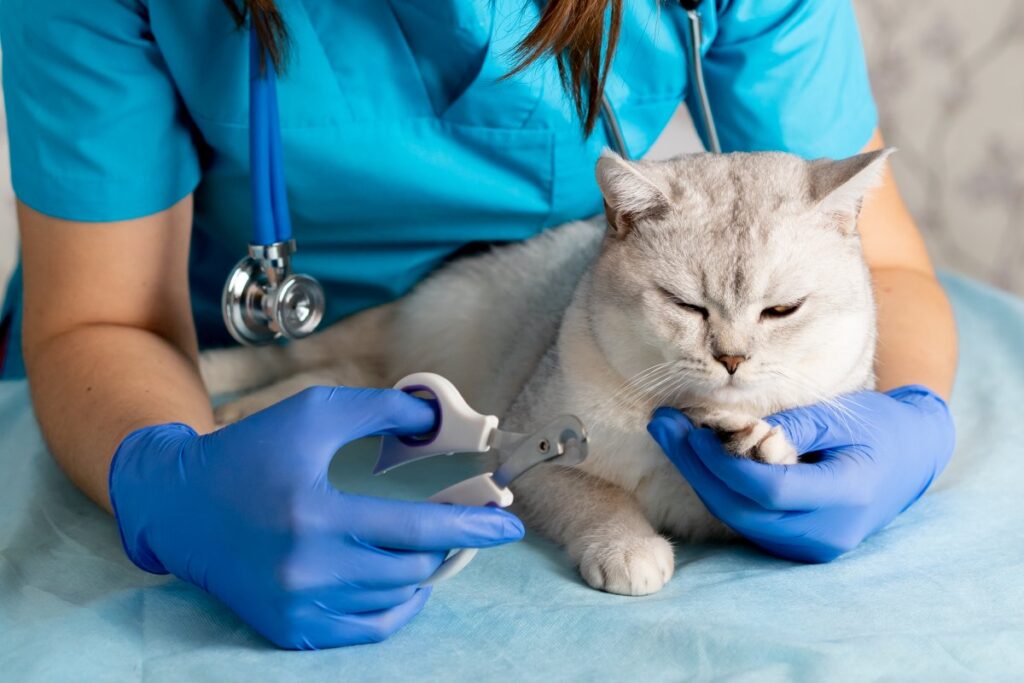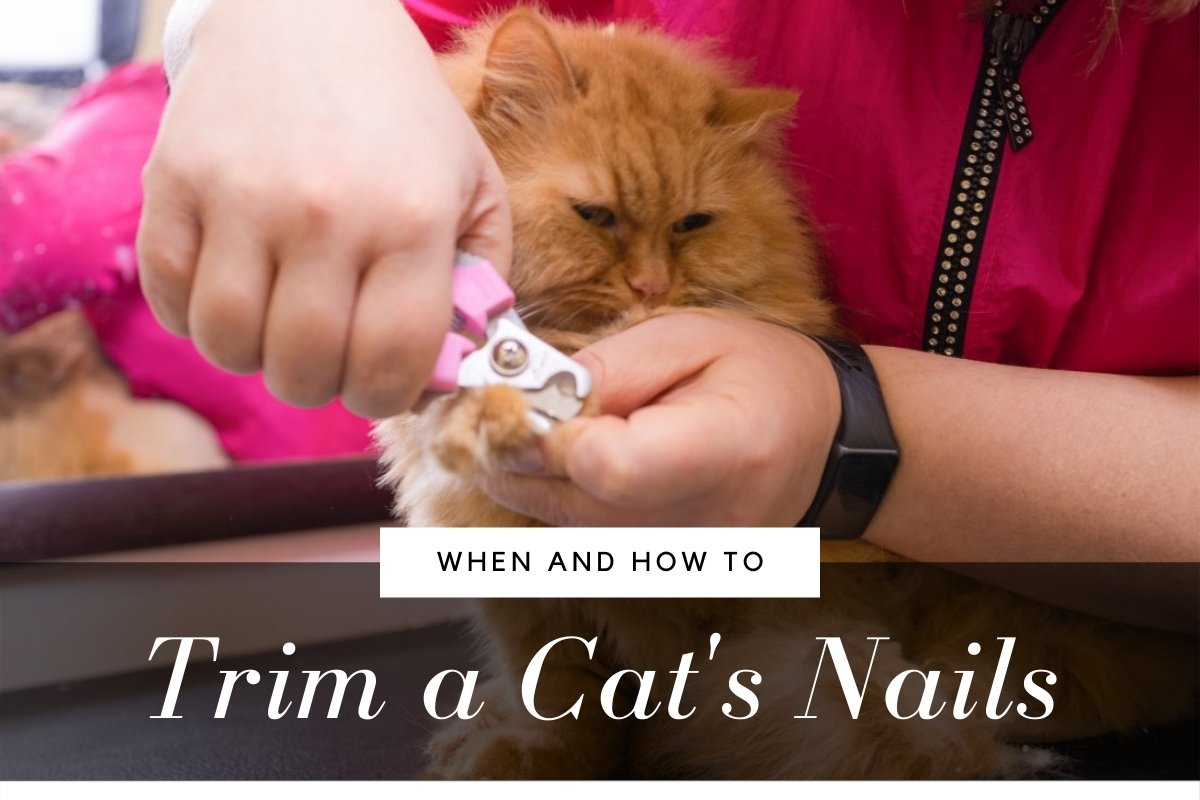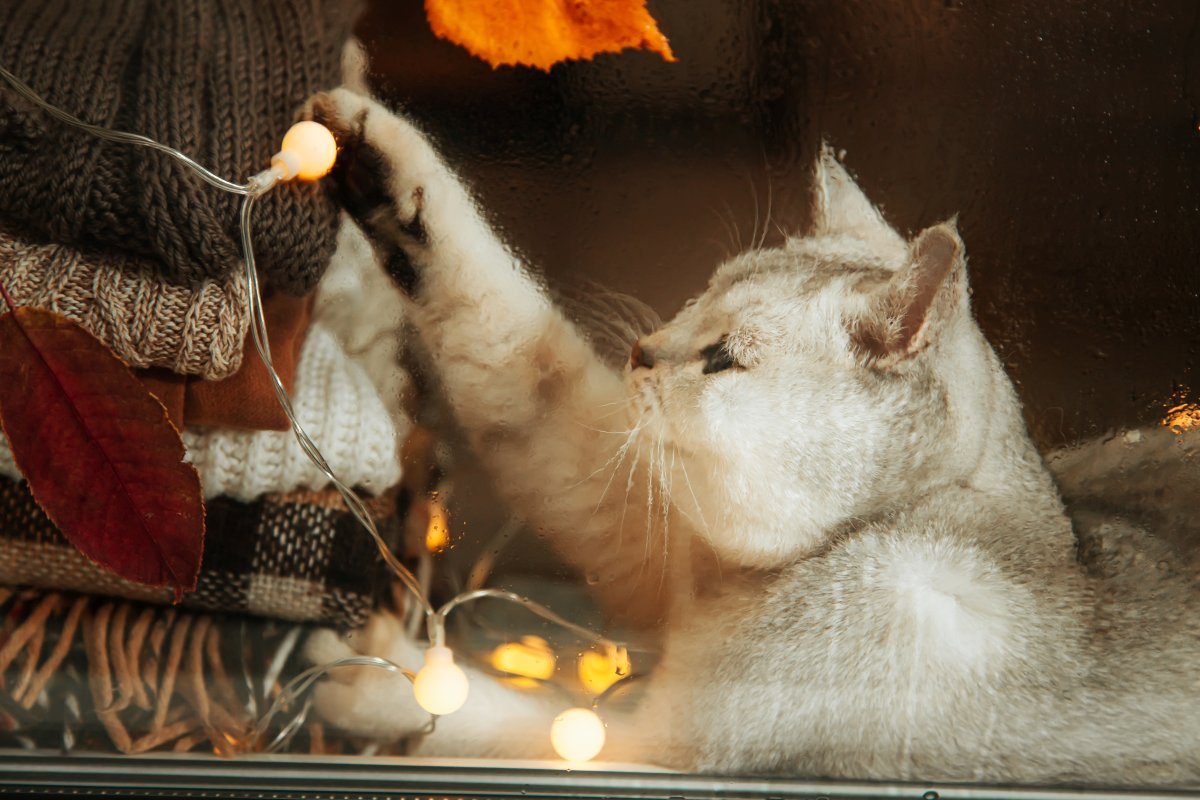Cats are lovable and adorable creatures as long as they don’t practice their claw scratching techniques on their human parents or the things found around the house.
And when they do begin to destroy items with their nails regularly, it is time for a trim job. But how do you trim a cat’s nail? Let’s find out.
Declawing vs. Nail Trimming
Cats are extremely agile species and rarely fail at surprising us humans with their limber movements by covering huge distances within the blink of an eye. Not only that, but they are also well equipped in the sense that they have great strength in their arms, given how small they are.
It is no doubt that a cat’s punch will leave almost everyone baffled and wondering how their size allows such power. Thanks to our feline friend, this also births the common problem of having damaged curtains and furniture around the house. Therefore, it is important to trim a cat’s nail and solve this problem which has become a matter of necessity for every cat owner.
Before it became a controversy, the most sought-after solution to the chaos caused by house cats worldwide was to declaw them. However, in today’s age, getting your cat declawed is often frowned upon and only considered in extreme cases. In addition to that, most vets even reject this service regardless of how desperate the customer is.

The reason behind that is the pain and discomfort caused to the cat, and many reject the idea of suppressing a cat’s nature of kneading and scratching. However, before we discuss how to trim a cat’s nails, there needs to be an understanding of the difference between declawing and trimming a cat’s nails.
With that out of the way, let’s dive into the crucial steps you need to take to help your cat have a better experience with nail trimming.
Set the Mood
Play with your cat’s feet
One of the most helpful techniques when you trim a cat’s nails in the early development of getting the cat used to the trimming process. This is mainly for those who have a kitten in their household, as habituating a young one is far easier than when it is grown.
Regardless of the age, the key here is to get your cat used to its feet getting handled and regularly touched. You will want to begin this process by massaging your cat’s paws and slowly transitioning into applying light pressure on the top and bottom of the paw to reveal the cat’s nails.
Offer treats
Furthermore, you can make this even easier by offering treats to your kitty while you play with its feet. This creates the illusion for the cat that this is an enjoyable experience. This prepares your cat, but you are also getting trained to become a professional cat handler who can restrain a cat without it knowing. This is the type of skill most vets wield, and you can too by simply practicing.

Introduce the nail clipper
The next thing you can do is get your cat familiar with the sight and the sound of a nail clipper without the intention of trimming initially. Let your cat examine and sniff the clipper while you offer treats to again associate the experience with entertainment. In terms of familiarizing your cat with the clipper, visual inspection by the kitty can be a great way to begin.
However, to take things up a notch, try getting your cat used to its sound by clipping something brittle like a toothpick. This will make a similar sound to when you clip its nail; thus, it prepares the kitty well.
Be Gentle
When you trim a cat’s nails, you need to be careful about not being rough when restraining the cat. Moreover, you will also need to be gentle when applying pressure on the paws to reveal the nails.
Another important note is that you definitely should not fight your cat if it tries to escape or pull away because this may create a hostile perspective which will only make things more difficult. Calming your cat before the trimming and during is a key, so make sure to give enough affection by stroking and offering treats and even gentle kisses.
As for the expert’s recommendation, it is suggested to train your cat slowly by extending one nail a day followed by a treat to establish a comfortable experience.

Avoid Clipping the Quick
Before you even begin to trim a cat’s nail, you need to be aware of the quick; a pink line that rests between the clear center of each cat’s nail. This thin fleshy line is essential where the blood vessels are, explaining the pinkish-red color. It is more important than anything that you do NOT cut through the quick because it will cause severe pain to the cat, and it may also lead to an infection.
The Maximum Length of Nail You Should Trim
It is essential to avoid clipping the quick; therefore, it is recommended that you clip no more than 1/16th inch of the nail. Clip only one nail at a time and give treats before clipping the next.
Always make sure to keep styptic powder around if you accidentally cut too deep and cause bleeding.
When to Trim a Cat’s Nails
Most cats should get their nails clipped every one and a half to two weeks before the nails grow too long and sharp. This also creates a routine that can make your cat more used to the activity. Additionally, all this should be done once you have made your cat used to their feet getting handled and entrusting you with the clipper.
When you decide to trim a cat’s nails, it is mostly for protecting the things in your house from getting destroyed. But regardless of the urgency, it is essential to trim the cat’s nails with care. Make sure you don’t scold your cat or restrain it too roughly.








2 comments